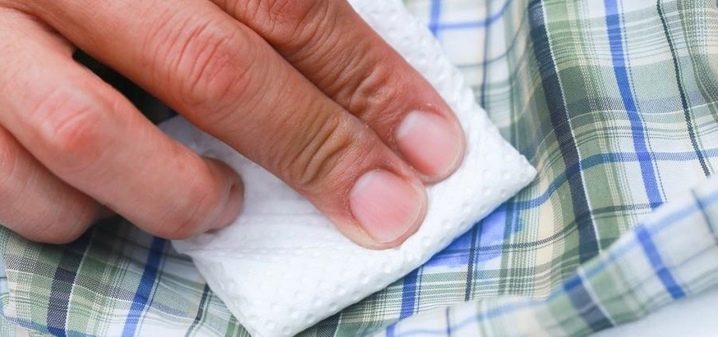How to dissolve Moment glue?
Superglue "Moment" - an indispensable tool in everyday life, allowing you to quickly connect together the parts of metal, wood, stone, paper, leather and ceramics. It provides a strong and reliable connection, but in cases where it is accidentally spilled and falls on the surface, where it should not be, removing the adhesive presents certain problems. Therefore, all the masters should know what can be used to dissolve the Moment glue.
Substance features
The main component of Moment glue and the like are various ether compounds known as cyanoacrylates. It is these compounds that provide the connection of parts, and in addition to them, various auxiliary substances — plasticizers, retarders, activators, and thickeners are also included. Being in a sealed tube, the glue remains in a liquid monomer state.The interaction with any alkaline medium (usually atmospheric moisture) leads to its rapid polymerization and hardening.
The formed polymer has a great adhesion to the surface, which can reach 250 kg / cm2, therefore, it is very difficult to remove the hardened glue from the surface.
Suitable solvents
Since superglue polymerizes when it interacts with moisture, standard solvents such as water, dichloroethane or alcohol will make the situation only worse. Therefore, to dissolve the "moment" you need to use special tools.
The dimethyl sulfoxide-based compounds proved to be the best in everyday life., in particular, "Dimexide", sold without a prescription in most pharmacies. As a solvent, it acts mainly on cyanoacrylates, which means it will not damage the majority of materials used in everyday life.
Superglues, including Moment, are very soluble with acetone and its derivatives (for example, acetonitrile). However, acetone is toxic and has an extremely aggressive effect on plastics, textiles, paper and wood. In addition to pure acetone, it is also possible to use acetone-containing mixtures, for example, ordinary nail polish remover.
Currently, special glue removers based on propylene carbonate have been created. (the so-called antiqua), for example, the trademark "Second". There are also special antiklei "Moment", as well as solvents based on nitromethane.
You can use hydrocarbon solvents, including gasoline and kerosene.
On the skin
In cases where the adhesive gets on the skin of the hands, it quickly hardens, as the surface of the skin is usually more moist than the environment. The most gentle way for the skin of hands to remove the formed polymer will be the use of ordinary table salt, which must be rubbed between the hands, having previously moistened them. In no case do not use soda, as a strongly alkaline environment, on the contrary, contributes to greater polymerization of cyanocrylates.
"Dimexide" is relatively safe, but requires a long exposure, so it is not recommended to use it for the body. If the salt doesn't help, you'll have to use acetone-based solvents. The main thing is to thoroughly wash your hands after removing the glue, and the subsequent use of a cream or skin lotion will be useful.
Another not very sparing, but an effective way to remove the “Moment” from the hands is a combination of hot water and subsequent rubbing with ordinary pumice.
On clothes
Acetone and its compounds are not categorically suitable for removing stains from superglue from the fabric. Clothes from ordinary fabrics can be soaked for half an hour in Dimexid dissolved in water - most of the glue spots then disappear. For delicate fabrics, anti-glue is more suitable, especially nitromethane.
Another way to clean the fabric from glue stains is to freeze it in the freezer for several minutes and then clean it with a brush. But synthetics are so best not to clean.
Gasoline can be used to clean rough fabrics. You can try to remove old stains using ordinary vinegar, since the acidic environment contributes to the monomerization of cyanoacrylates.
On plastic
Most of the solvents acting on polymeric adhesive in nature dissolve plastics that are polymeric in nature. Therefore, the best way to remove “Moment” stains from plastic surfaces will be the use of “Dimexide”.
For cleaning resistant plastics it is possible to use acetone and mixtures containing it.
On the glass
To remove the glue stains from the glass, you can dilute the universal wiper and apply it to the stain. You can also try to apply white spirit. The use of Dimexidum can leave hard-to-remove stains on the glass.
On the tree
If the tree has not yet been processed, it is easiest to remove the glue mechanically from it. If the surface is already prepared for use, then acetone or “Dimexide” is best for cleaning.
In cases where the surface is covered with a layer of varnish, acetone should not be used. The use of Dimexide can also damage the lacquer, so that it will take a long time to rub them with soap and water to clean lacquered surfaces.
On metal
To dissolve the glue stain on the metal, it is necessary to moisten the usual cotton pad with Dimexide or acetone and attach it to the stain. After half an hour-hour, residues of glue are removed mechanically.
How to remove glue from any surface, see the next video.

































